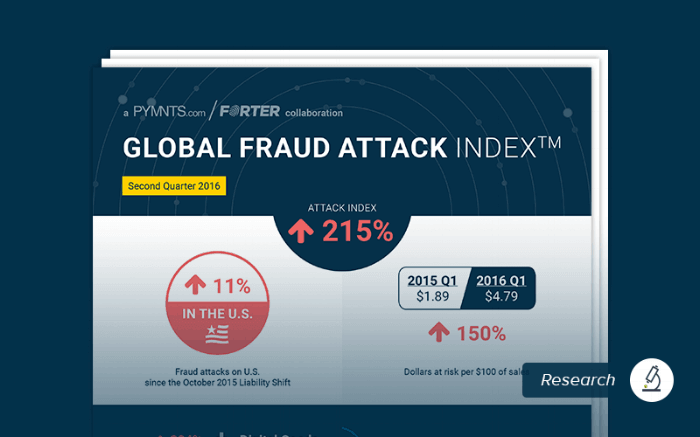The latest edition of the Global Fraud Attack Index™ is out, reflecting the full range of data from 2015.
Online Fraud Attacks Are On the Rise
Over the 12 month period, online fraud attempts grew by an alarming 215%.
While there are probably a number of reasons for this development, it’s likely that EMV adoption in the U.S. is a significantly contributing factor.
With the microchip cards making card present fraud more difficult, criminals are moving to the more vulnerable channels of e-commerce, mobile commerce and phone orders.
As it’s turned out, they’re ahead of the card networks – months after adoption, retailers have been complaining of the delays in getting their EMV technology up and running, but fraudsters already started moving ahead of the official adoption date. Of course, they’re not restrained by the processes and responsibilities that legitimate bodies must deal with – they’re agile, creative actors whose only interest is in maximizing their own personal bottom line.
The Holiday Period
Q4, the all-important holiday season, usually represents a lull if you’re considering fraud rate. This isn’t because fraudsters try to turn over a new leaf during the giving season, but simply because there are so many legitimate customers making purchases that the rate of fraud attempts go down in relative terms. That wasn’t the case in 2015.
In fact, not only did the fraud attack rate fail to drop – it actually went up by 11%.
That might not sound dramatic in comparison to the 67% rise between the second and third quarters, and the 69% between the first and second, but when you consider the context, placing the rise in the picture of the busy holiday season, you appreciate how significant that 11% really is.
Apparel: Apparently Attractive to Fraudsters
Luxury and digital goods continue to head the list of at-risk verticals, both of which make sense. Luxury goods are valuable, and easy to resell for an excellent profit, while digital goods are particularly easy to steal since fraudsters don’t have to think about details like pesky reshipping.
But the most recent Global Fraud Attack Index™ focuses on another segment, more unexpected segment as well: Clothing and footwear.
What’s particularly interesting here is that the rise is solely due to one particular type of fraud attack – botnet attacks. While other kinds of fraud techniques have remained fairly constant for this segment, botnets increased from 0.8% of all transactions to 1.1%.
Average attack amounts are up as well, but by only a small amount. Overall, the potential cost of fraud increased from 2.4% to 3.3%. Something for apparel etailers to think about – how to block these increasing fraud attacks without increasing friction for the customer.



